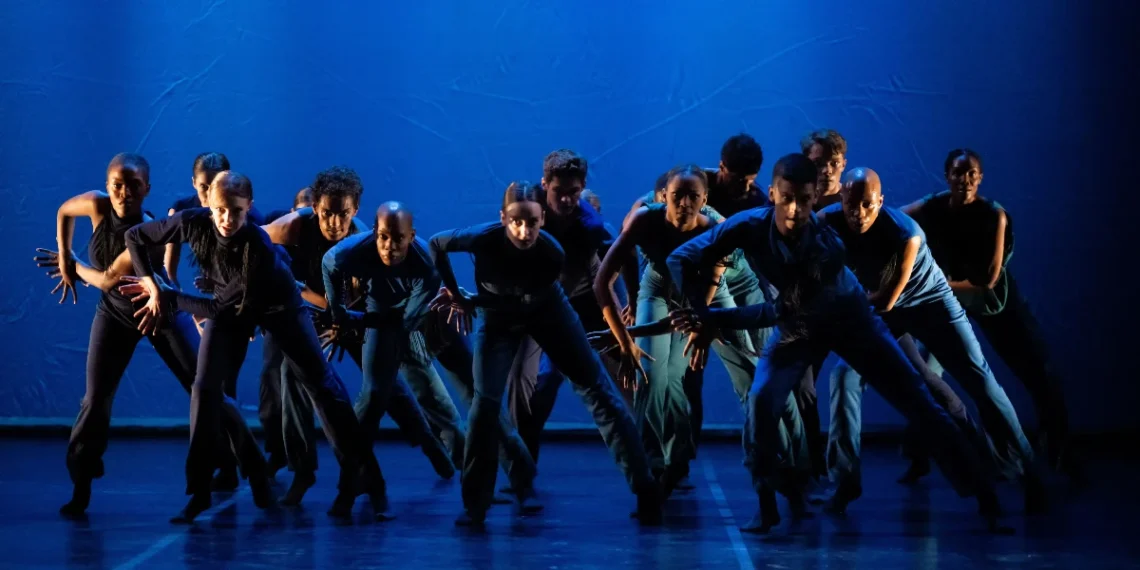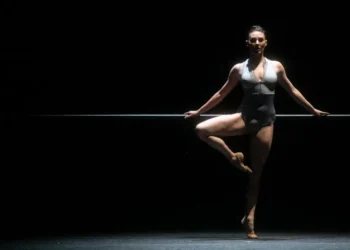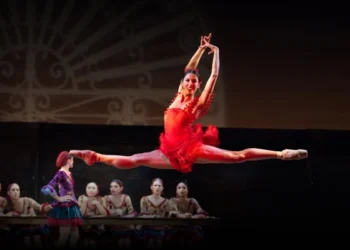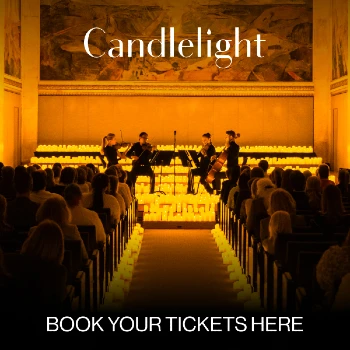Joburg Ballet Communion of Light Review
November 1, 2025 | Linbury Theatre, Royal Opera House – London, England
Tonight’s mixed bill is in honour of South Africa’s recent milestone of 30 years in democracy, comprising works from South African choreographers. The title, Communion of Light, is in reference to the spirit of connection, hope and creativity at the heart of Joburg Ballet’s enterprise.
But it is perhaps in contrast to some rather dark and heavy themes portrayed onstage this evening.
You may also like...
Turn It Out With Tiler Peck & Friends Review: A Prima, Making It All Happen
As curator of Turn It Out With Tiler Peck & Friends - and together with her stellar retinue - Peck puts on a show that not only inspires but also proclaims how she is setting a new standard in the...
Philadelphia Ballet Carmen and Boléro Review
Philadelphia Ballet Carmen and Boléro Review: This double bill requires full-bodied expression and unrestrained control – only a company willing to commit fully can execute it successfully.
Joburg Ballet Communion of Light Review
Concerto for Charlie was a bright opening piece by Veronica Paeper for cosmetic house Revlon, referring to ‘Charlie’ the perfume. The non-narrative piece had quite simple choreography with a light playful feel to it; a slower section within Shostakovich’s Piano Concerto No. 2, it was relaxing to sink into the very familiar music.
One female dancer in follow-spot and five male dancers moved in the shadows; their heads turned towards wherever she travelled, smoothly passed from partner to partner. It had quite a reverent feel about it.

Camagwini (‘Kago-Entle’) was a short number choreographed and performed by Tumelo Lekana, of which I’d love to have seen more.
Camagwini is a prayer in motion, an offering in gratitude to the ancestors for Kago-Entle; the creation of life, art and spirit.
Lekana wore traditional tribal wear and pointe shoes. An orange glow on the backcloth and tribal music by Miriam Makeba filled the auditorium. Lekana performed an invigorating dance; tribal movements mixed with classical technique, a lot of rotation in torso and hips and a continual blend of flat-footed steps and sharp pointe work. The strings of beads swinging from his shoulder piece contributed rhythmically.
A longer piece would have been great to enable a deeper experience of this unique and interesting presentation.
Resonance, by Joburg’s artistic director Dane Hurst, seemed to herald the company’s signature style. There was huge confidence in deliverance of this contemporary ballet work.
Exploring themes of cultural diversity, Resonance was created to celebrate the enduring power of music and dance to unite, heal and inspire freedom of expression.
However, dark undertones seemed to emanate from this work. Male dancers entered in black suits and females in short dresses of varying colours, who displayed very strong, innovative pointe work. There were times the group moved in unison, the music a mesmeric hum, and other times the mood lifted, a smooth jazz beat as friends met in a club-style atmosphere.
Tables were used for dancing on, leaping off and leaning against. The lyrical jazzy feel suited this group; a lot of flirtatious interactions and even a salsa vibe at times. In partner-work, the female dancer was predominantly showcased, male dancers tending to show their dance abilities more in group sections.

A brief male duet, with the sensation of seduction, was separated by another male and led into a deep piano score as a group of bare-chested men entered and two more with their suit jackets on, the latter pair holding a dangerous air of threatened violence.
The others at first rallied round each other and then disappeared leaving just one of them to the mercy of their enemies. A stick was wielded in violent manoeuvres, very cleverly portrayed through movement with lots of impressive lifts. It was actually quite uncomfortable and disturbing to watch.
Azul, by Spanish choreographer Jorge Pérez Martínez opened Act Two. A fresh, spirited piece danced to classical Spanish guitar compositions, the piece has a fluid dance language reminiscent of flowing water.
Cleverly, the blue, black and grey casual trouser and top combinations with flowing tassels under sleeves or around the collar, represented water flow with a Spanish influence.
Pérez Martínez’s sense of musicality was exquisite.
His work had beautiful connection to the music, highlighting inflections and nuances in innovative ways. The choreography had unpredictable flow, with some characteristic moves beginning to appear. Lit from the sides, a rolling sequence through the floor in canon was particularly effective in illustrating flowing waters. There was also subtle but clever use of spotlight to highlight rise and fall during the blackout at the end.

Salomé, by Dada Masilo, is based on Oscar Wilde’s play and illustrates the beheading of John the Baptist, detailed in the Gospels of the New Testament. It captures the destructive nature of unbridled desire.
This was a very heavy number to close the programme with. The music relentless and stirring, this work felt challenging and disturbing to watch. The decapitated head of John the Baptist was brought to Salomé (danced by Latoya Mokoena) on a platter, and she danced movingly with it; in the final blackout she drops to her knees crying aloud.
Whilst incredibly powerful and thought-provoking, perhaps a lighter, more positive piece could have lifted this varied and talent-filled production to close.
Featured Photo of Joburg Ballet in Jorge Pérez Martínez’s Azul. Photo by Lauge Sorensen, courtesy of Royal Ballet & Opera.












